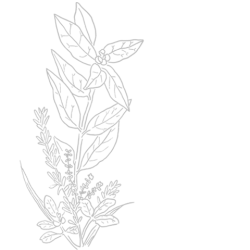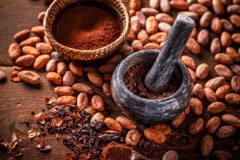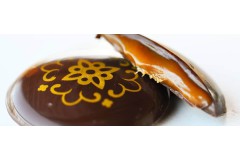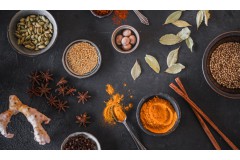Provence herbs are an aromatic mixture composed of several herbs from the Mediterranean region . We find plants pushing essentially in Provence such as savory, oregano, thyme, rosemary and basil.
For centuries these herbs picked in the wild, today they are produced and cultivated. Although picking for its personal consumption is still of course possible in Provence.
the herbs of Provence, assembled according to the traditional mixture, are labeled red label, the Composition is precise and it is available as follows: 26% savory, 26% oregano, 26% rosemary, 19% thyme and 3% basil.
The quality of the mixture determines the care attached to drying, the producer of the producer. Indeed the drying is delicate, it must of course dry the plant but also to know how to keep its color green. A poorly dried rosemary will quickly turn in brown or even black. The herbs of Provence is a real painting for a shades of green: the almost emerald green of rosemary, the ash green of thyme, the olive green of the savory, the dark green of the oregano with the silver reflection.
To this treatment granted, you must also be fast to obtain optimal drying: ni ni Too weak because herbs could mold, nor too strong otherwise they crumbled. An attentive producer will be able to freeze the colors of his herbs in order to deliver them to you. Although bathed under the sun your dried Provence herbs must reflect the freshness!
Do you know that Provence herbs come very little Provence?
at least 90% of the Provence herbs that we find do not come from Provence. Indeed, the name "Herbs of Provence" is not protected, so it is quite possible to find herbs of Provence that pushed in Eastern Europe or Maghreb. This does not necessarily mean (the shortcut would be too easy) that the product will be of poor quality, but that its traceability will be delicate and that the journey of its import may have distorted its taste. o: p>
it remains difficult to know if the herbs of Provence come from Provence, the only information Who can help you: if this is not indicated, then you are guaranteed that it comes from elsewhere.
The Thym of Provence has just obtained (June 2018) a protected geographical indication ( IGP) on a large territory passing through Provence and going up to the south of the Drome and the Ardèche. It thus protects the origin of the Thyme of Provence.
Carvacrol and Terroir, a link?
beyond geographic protection, the thyme of Provence has a content of At least 15% of Carvacrol (it is a condition of the IGP specifications) while the other thyms not coming from Provence have a very lower content. This is a typical regional characteristic. Although its name is not necessarily very poetic, you know Carvacrol, or rather you have in memory its smell, its flavor: it is this warm, tough, spicy and powerful taste that we find in thyme but also Oregano or Sariette. Provence thyme naturally has this high rate of rocky, dry and hot soils on which it grows. This regional and taste characterization is now protected.
has the thyme, the terroir always influences the original products. This is what makes the strength of authentic regional products.
max Daumin
Epices Max Daumin
or 2017-2018 silver 2020-2021 bronze 2019 | National grocery trophy
Artisan producer of the Culinary College of France 2021






